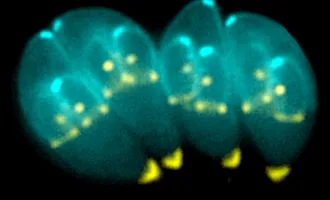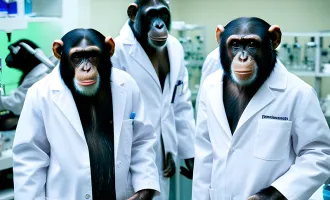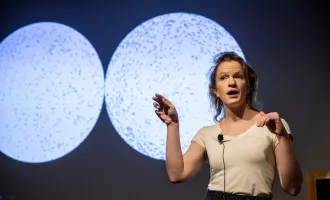Journal Club: Cardiology & Cell Biology, Cancer Biology, Immunology, and Cell Biology
CARDIOLOGY & CELL BIOLOGY: Human disease modeling reveals integrated transcriptional and epigenetic mechanisms of NOTCH1 haploinsufficiency. Theodoris, C.V., et al. (Srivastava, D.). Cell. 2015. 160(6):1072-1086
Sometimes both copies of a given gene can be severely mutated, and the body can compensate just fine. At other times, however, even having one perfectly good copy isn’t enough.
Severe mutations in just one allele of NOTCH1 cause abnormal aortic valve development, leading to valve calcification and damage. Here, Theodoris and colleagues report mechanisms by which decreased NOTCH1 dosage leads to disrupted cell biology.
They studied endothelial cells derived from induced pluripotent stem cells. They found that when only one normal copy of NOTCH1 was present, there were widespread changes in gene expression and chromatin state, including activation of genes involved in bone formation and inflammation. Shear stress--like that experienced by endothelial cells on valves as blood flows by them--could cause repression of such genes only in endothelial cells in which both copies of NOTCH were functional.
CANCER BIOLOGY: Brg1 promotes both tumor-suppressive and oncogenic activities at distinct stages of pancreatic cancer formation. Roy, N., et al. (Hebrok, M.). Genes Dev. 2015. 29(6):658-71.
Understanding biology and treating disease would be much simpler if each protein did one, and only one thing, in every situation. Alas, context is often crucial, as members of the Hebrok lab found in this paper.
A common type of pancreatic cancer first passes through precursor lesions in which what were once acinar cells become more like ductal cells. In this paper, the authors show that development of this cancer from ductal cells involves a similar “retrogression”.
They find that Brg1, part of the SWI/SNF complex, normally acts in pancreatic ductal cells to prevent such dedifferentiation. Surprisingly, in pancreatic tumor cells, Brg1 actually supports their tumorigenic state. The authors also demonstrate that JQ1, a drug currently being tested as treatment for hematologic cancers, has mixed effects on Brg1 that together impair pancreatic tumorigenesis.
IMMUNOLOGY: IgE-activated basophils regulate eosinophil tissue entry by modulating endothelial function. Cheng, L.E. et al (Locksley, R.M.). J Exp Med. 2015. Epub ahead of print.
Allergies, in which the body’s immune system acts against non-threatening environmental targets, are a source of annoyance for millions of people and for some a potentially deadly threat.
A number of classic features of allergic responses have been identified, including an important role for IgE antibodies and entry of eosinophils into the tissue, but many important details in this process have remained unclear. In this paper, the authors identify an important role for basophils in allergy.
They find that interaction between the allergen and IgE-displaying basophils leads to basophil activation and positioning near blood vessels. There, the basophils induce changes in the endothelium that promote eosinophil exit and accumulation in the tissue.
CELL BIOLOGY: Increased H+ efflux is sufficient to induce dysplasia and necessary for viability with oncogene expression. Grillo-Hill, B.K., et al. (Barber, D.L.). Elife. 2015. Epub ahead of print
The pH of the blood and body fluids are carefully regulated, and even small changes--from say 7.4 to 7.2--are a cause for concern. Recent research has begun to explore the effects of changes in pH within a single tissue or even a single cell.
Previous research has found that increased intracellular pH is common in cancer and supports increased proliferation and decreased apoptosis. In this paper, Grillo-Hill and colleagues provide new insights into this process.
Working with flies, they demonstrated that increased intracellular pH alone leads to tissue dysplasia. Moreover, such increases heighten the effects of tumor-promoting mutations in Ras. They further find that partly blocking efflux of H+, which prevents this increase in pH, is deleterious to tumors in flies and in human tumor cell lines, suggesting a possible new avenue for therapy.


